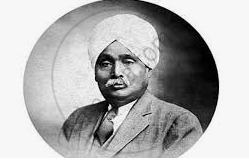Advertisements
Advertisements
प्रश्न
Bipin Chandra Pal was one of the greatest revolutionaries’. In this context briefly describe the reasons for his drifting away from the Moderates.
उत्तर
From the time of his student life, Bipin Chandra Pal was interested in politics.
(i) He was greatly influenced by the political life of Surendra Nath Banerjee. Bipin considered him to be his political Guru.
(ii) He joined the Indian National Congress in 1886.
(iii) He was of the opinion that in order to achieve political unity it was necessary for the people to know their Indian culture. If they appreciate their own culture, they will come closer to-each other and will fall in line to achieve political unity.
(iv) While he was still a member of the National Congress, he realized that the constitutional methods of the Moderates did not bear any results.
(v) He shifted his loyalty from the Moderates to the Assertive Nationalists.
APPEARS IN
संबंधित प्रश्न
Mention two important contributions of Lala Lajpat Rai.
The early Congressmen were liberal in their views and programmes. This led to the rise of radical nationalists who demanded more forceful action against the British. In this context, discuss the following:
How did Tilak bring a new wave in Indian politics that was distinct from the early Congressmen?
Write any two contributions of Lala Lajpat Rai to the National Movement.
In what way was Tilak the forerunner of Gandhiji?
Which national leader Was called Sher-e-Punjab? Why was he called so?
In what two ways can Tilak be called the “Fore-runner of Gandhi”?
What were the steps took by Bal Gangadhar Tilak in exposing’the causes of British Administration.
What were the contributions of Lala Lajpat Rai in National Movement? Discuss in brief.
Answer the following:

(i) Identify the persons in the picture given above.
(ii) To which section of the Congress did he belong and what was his ultimate objectives?
The Indian National Movement is divided into three phases. With reference to the Second Phase of the Indian National Movement, answer the following question:
Mention any two contributions of Bal Gangadhar Tilak.
